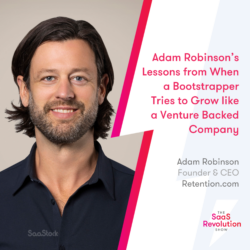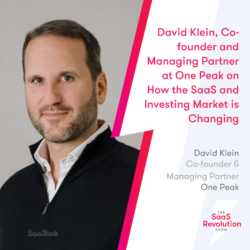Launching a SaaS product without proper validation is a risk not worth taking. Ensuring your idea has a market and potential customer base can save time, money, and resources. This article dives into when it’s worth waiting to validate your SaaS idea and offers 16 proven strategies to quickly validate it. Let’s turn your concept into a thriving business with confidence.
When is it Worth Waiting to Validate Your SaaS Idea
Market Research is Incomplete
Before rushing into validation, ensure your market research is thorough. Understanding the market size, customer pain points, and competitor landscape is crucial. Incomplete research can lead to misguided validation efforts. For example, if you’re developing a project management tool, knowing the specific needs of your target industry helps tailor your validation process effectively.
Product Concept Needs Refinement
If your product concept isn’t fully fleshed out, waiting might be beneficial. A well-defined SaaS idea should address specific problems with clear solutions and be cost-effective. For instance, if you’re creating a CRM tool, detailing features like automated follow-ups and customer segmentation will provide a more robust basis for validation, ensuring you test a concept that resonates with potential users and is affordable compared to, e.g., the Freshsales pricing.
Resource Constraints
Sometimes, the timing isn’t right due to resource limitations. If your team lacks the bandwidth or budget to conduct proper validation, it’s better to wait. For example, bootstrapped startups might delay validation until they secure initial funding, ensuring they have the necessary resources to gather meaningful feedback and insights.
Early Feedback Suggests Major Revisions
If initial feedback from trusted advisors or early adopters indicates significant changes are needed, pause to refine your idea. This can prevent wasting efforts on validating a concept that requires substantial improvements. For instance, a SaaS development tool for remote teams might need better collaboration features based on early user input before broader validation.
Pros and Cons of MVP Development
Pros
- Quick Feedback Loop: An MVP allows you to gather real-world feedback quickly, helping to refine the product based on actual user experience.
- Cost-Effective: Developing an MVP is less expensive than building a full-featured product, saving resources while still validating your idea.
- Market Demand Validation: Testing core functionalities with early adopters helps determine if there’s genuine interest and demand for your product.
- Early Problem Detection: Identifying usability issues, bugs, and feature gaps early in the development process helps ensure a smoother full launch.
- Investor Attraction: A working MVP can attract investors by demonstrating a tangible product and initial user interest, enhancing funding prospects.
Cons
- Limited Features: An MVP’s limited features might not fully showcase the product’s potential, possibly leading to lukewarm user reception.
- User Perception: Early users might perceive the MVP as a reflection of the final product, which could affect their long-term interest if they encounter too many issues.
- Resource Allocation: Even with a focus on core functionalities, developing an MVP still requires a significant allocation of time and resources.
- Market Misjudgment: Relying solely on early adopters’ feedback can sometimes mislead the product’s direction, as this group might not represent the broader target market.
- Scalability Challenges: An MVP might not be fully scalable, potentially leading to technical debt and additional development efforts when transitioning to a full product.
How to Validate Your SaaS Idea – Quickly
Customer Interviews
Conducting interviews with potential customers provides direct insights into their needs and pain points. Prepare a list of questions to uncover their current challenges and how your SaaS solution could help. For example, if you’re developing an invoicing tool, ask small business owners about their invoicing process and what features they find most valuable.
Online Surveys
Create and distribute online surveys to gather quantitative data about your target market’s needs and preferences. Use tools like SurveyMonkey, Jotform Survey Maker or Google Forms to reach a broader audience. For instance, survey freelancers to understand their requirements for a time-tracking app, focusing on features like ease of use and integration with billing systems.
Landing Pages
Set up a simple landing page describing your SaaS product and its benefits. Use A/B testing to experiment with different headlines, calls-to-action, and value propositions. Measure the conversion rates to gauge interest. For example, create a landing page for your email marketing tool, highlighting key features like automation and segmentation.
MVP Development
Develop a Minimum Viable Product (MVP) to test core functionalities with a small group of users. This approach allows you to gather real-world feedback quickly. For example, launch an MVP of your project management software with essential features like task tracking and team collaboration to see how users interact with it.
Pre-Sales Campaigns
Run a pre-sales campaign to measure demand and secure early customers. Offer discounts or exclusive access to those who commit early. For instance, promote your upcoming SaaS analytics tool on platforms like Product Hunt, offering early adopters a lifetime discount in exchange for their initial commitment.
Social Media Engagement
Leverage social media platforms to gauge interest and gather feedback. Create posts, polls, and discussions around your SaaS idea to engage with your target audience. For example, use LinkedIn to share insights about your HR management tool and ask HR professionals for their opinions on specific features.
Competitor Analysis
Study your competitors to understand what works and what doesn’t in your target market. Analyze their strengths and weaknesses to identify gaps your SaaS product can fill. For instance, if you’re developing a customer support tool, look at leading solutions like Zendesk and identify opportunities to offer better integration with CRM systems.
Beta Testing
Invite a group of users to test your beta version and provide feedback. This helps identify bugs, usability issues, and feature gaps. For example, launch a beta version of your content management system to a select group of bloggers and content creators, asking them to report any issues they encounter.
Crowdfunding Campaigns
Use crowdfunding platforms like Kickstarter or Indiegogo to validate demand and raise funds simultaneously. Present your SaaS idea, outline its benefits, and offer early access or special perks to backers. For instance, launch a campaign for your online learning platform, showcasing its unique features like interactive lessons and progress tracking.
Usability Testing
Conduct usability testing sessions to observe how real users interact with your product. Identify pain points and areas for improvement. For example, if you’re building a financial planning tool, watch users navigate through budgeting features and make note of any difficulties they encounter, using recruitment statistics to enhance user experience.
Email List Building
Create an email list of interested potential customers and keep them engaged with updates about your product’s development. Gauge interest by monitoring sign-up rates and email engagement. For instance, build a list for your SaaS marketing automation tool by offering valuable content and sneak peeks in exchange for email subscriptions.
Industry Forums and Communities
Participate in industry-specific forums and online communities to discuss your SaaS idea and gather feedback. Engage with members by sharing insights and asking for their opinions. For example, join a Slack group for software developers and present your SaaS debugging tool to gather their thoughts and suggestions.
Free Trials
Offer a limited-time free trial of your SaaS product to attract early users and collect feedback. Monitor usage patterns and gather testimonials. For instance, provide a 14-day free trial of your task management software, allowing users to explore its features and provide input on their experience.
Case Studies
Develop case studies with early users to showcase how your SaaS product solves real-world problems. Use these stories to attract more users and validate your concept. For example, create a case study using an AI case study generator on how a startup improved their project delivery using your collaboration tool, highlighting specific benefits and results.
Webinars and Demos
Host webinars and live demos to present your SaaS product to a broader audience. Use these sessions to answer questions and gather immediate feedback. For example, conduct a webinar demonstrating the key features of your SaaS inventory management system, addressing participants’ queries and noting their suggestions.
Product Hunt Launch
Launch your SaaS product on Product Hunt to gain visibility and gather feedback from a tech-savvy audience. Monitor comments and engagement to validate your idea. For example, introduce your SaaS productivity tool on Product Hunt, interacting with users who provide feedback and suggestions for improvement.
Influencer Partnerships
Collaborate with influencers in your target industry to promote your SaaS product and gather feedback from their followers. For example, partner with a well-known tech blogger to review and share their thoughts on your SaaS analytics platform, leveraging their audience for validation and exposure.
Future Implications
As the SaaS landscape continues to evolve, the methods for validating SaaS ideas will likely become more sophisticated and data-driven. The rise of AI and machine learning could enable more accurate predictions of market demand and user behavior, reducing the risk associated with new product launches.
Additionally, the increasing importance of user experience means that future validation processes may emphasize UX/UI testing even more heavily. Crowdfunding and pre-sales campaigns might become standard practice for securing initial funding and gauging interest. However, with these advancements come challenges, such as heightened competition and the need for continuous innovation to stand out in a crowded market. Ethical considerations around data privacy and user feedback will also become more prominent, requiring startups to navigate these issues carefully.
Ultimately, staying agile and responsive to these trends will be crucial for SaaS companies aiming to compete on digital marketplace platforms.





